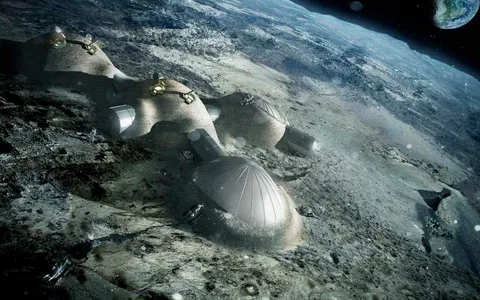In the vast expanse of possibilities for humanity’s future, one concept stands out as both ambitious and awe-inspiring – Lunar Habitats. As we embark on a journey towards establishing a human presence beyond Earth, the construction of habitats on the Moon emerges as a beacon of progress. In this article, we delve into the intricacies of Lunar Habitats Construction, exploring the cutting-edge technologies, challenges, and the unprecedented potential it holds for our species.
Lunar Landscape: Challenges and Opportunities
Regolith Utilization: Building with Moon Dust
Constructing habitats on the Moon comes with its own set of challenges, most notably the lunar regolith. Instead of viewing this fine dust as an impediment, we see it as a valuable resource. Our approach involves harnessing the regolith for construction purposes. By utilizing 3D printing technology adapted for lunar conditions, we can create sturdy structures that not only withstand the harsh lunar environment but also contribute to sustainability efforts.
Radiation Shielding: Innovation for Lunar Safety
One of the critical considerations in Lunar Habitat Construction is shielding against the moon’s unfiltered exposure to solar and cosmic radiation. Our engineers have developed state-of-the-art shielding technologies, incorporating advanced materials and design principles. These innovations not only protect inhabitants but also lay the groundwork for future interplanetary construction endeavors.
Sustainable Living Beyond Earth: A Vision Realized
Closed-Loop Ecosystems: Self-Sufficiency in Lunar Colonies
Ensuring the sustainability of lunar colonies is paramount to the success of human settlement beyond Earth. Our vision involves the implementation of closed-loop ecosystems within lunar habitats. These self-sustaining systems recycle resources, including air, water, and waste, creating an environment where humanity can thrive without relying on continuous Earth-bound support.
Renewable Energy: Powering the Moon with Innovation
In our pursuit of creating a self-sufficient lunar ecosystem, harnessing renewable energy is a cornerstone. Solar panels adapted to the unique conditions of the Moon provide a consistent and sustainable power source. This not only powers habitats but also facilitates the operation of essential life support systems, ensuring a seamless and uninterrupted lunar living experience.
Lunar Tourism: Bridging the Gap Between Earth and Moon
Space Tourism Infrastructure: A New Industry Takes Flight
As Lunar Habitats Construction progresses, a new frontier in space tourism emerges. Our comprehensive approach includes the development of infrastructure to support lunar tourism. From comfortable accommodations to breathtaking lunar landscapes, our habitats are designed to provide an unparalleled experience for those venturing beyond our planet.
Low-Gravity Adapted Facilities: Enabling Human Exploration
Living and working on the Moon require adaptations to the lower gravity environment. Our habitats incorporate facilities specially designed for human comfort and efficiency in low-gravity conditions. These innovations pave the way for extended lunar stays and enable scientific exploration that goes beyond the limits of conventional space missions.
Conclusion: Shaping the Future Beyond Earth
In the grand tapestry of human achievement, the construction of Lunar Habitats stands as a testament to our innate drive for exploration and progress. As we pioneer the future of human settlements beyond Earth, our commitment to innovation, sustainability, and the seamless integration of technology propels us to new heights – or should we say, new orbits. The era of Lunar Habitats Construction marks a paradigm shift in our understanding of what it means to be a multi-planetary species.



